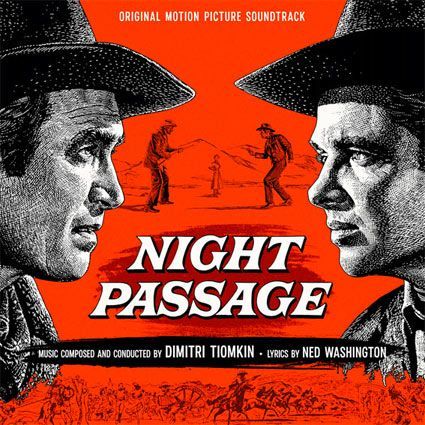Jason and the Argonauts

Label: Intrada
Catalogue No: MAF 7083
Release Date: 1999
Total Duration: 61:07
UPN: 7-2025-87083-2-8
Bernard Herrmann’s long lost JASON score finally sees the light of day. In this excellent recording, with Bruce Broughton helming the Sinfonia of London. Herrmann’s score – hitherto available only via excerpts on collections – is brought to vivid life in its complete form, from the rhythmic chords of its opening prelude, drawn from the drumming of the ship’s oar-master through the clackity violence of its mass skeleton attack. The film’s fantastic plot and settings – from the viewpoint of the Greek gods on Mount Olympus through the magical baffles against the creatures of myth and legend – gave Herrmann wonderful opportunities for music, as his collaborations with Charles Schneer and Ray Harryhausen always did. Along with THE 7TH VOYAGE OF SINBAD and THE MYSTERIOUS ISLAND, this is one of Herrmann’s best fantasy scores, a brilliant work which, in this new recording, is restored to its full glory with the inclusion of a number of cues (including Herrmann’s original finale) which were unused in the film’s release.
“The Prophecy” is archetypal Herrmann – his classic 2-note motif shifting from major to minor chords is put to brilliant use to create a quietly ominous and portentous mood. Mesmerizing harp work over flutes introduces Jason in “River Bank,” which also includes a reprise of the prophecy theme, reminding the viewer I listener of his place in the prediction. The solo harp music representing the Mount Olympus gods is introduced in “The Oak Grove,” swelling into a rich chordal progression as Hermes makes himself known to Jason and transports him to Olympus. “Departure” reprises the main theme – which we now understand is associated with the ship that transports Jason and his crew to faraway worlds where we will meet monsters, romance, and the grail of his seeking: the Golden Fleece.
“The Titans” and the following cues that take place on the Isle of Bronze are perhaps the score’s standout cues – beautifully muted, ominous, chordal progression after chordal progression until the inevitable coming to life of the bronze titan, Tabs, exquisitely captured by the awesome power of double tympanis and four tubas under surging octaves of trumpets and horns. Music for “The Harpies” is accomplished through rapid triplets of winds and harps, jagged figures emphasizing the cruelty and screeching of the harpies as they torment the blind prophet Phineas. The clashing rocks sequence, heard in “Medea’s Ship” and “Triton” is as powerful as the concept suggests, ferocious percussion (tympani and bass drum) and brass arpeggios echoing through the watery chasm that narrowly crushes the Argo – whose motif is recalled through the percussion crashes that pervade the cue.
“Medea,” the film’s love theme, offers a brief respite from the sonic violence of the clashing rock sequence. The music for “The Hydra” emerges out of the 2-note suspense material, dense harmonies of brass, tympani, and harps; music that will emerge, from low clarinets and a rendition of the traditional melody, “Dies lrae” from low winds and brass, in “Hydra’s Teeth” as the teeth of the slain Hydra awaken the skeletons of former victims, who – in a scene that bests the single skeleton fight in 7th VOYAGE OF SINBAD, converge upon Jason and his men accompanied by clacking woodblock, castanets, and xylophone.
Listening to the JASON score in its full glory offers another reason why Bernard Herrmann understood the relationship between film and music better than anybody, and why he remains unequaled in music for cinema. Doug Fake has written a perceptive and illuminating 12-page CD booklet that describes the music’s genesis and each cue in detail. This is my choice for the best vintage soundtrack of the year thus far.
Originally published in Soundtrack Magazine Vol. 18/No. 70/1999 - With permission of the editor, Luc Van de Ven



